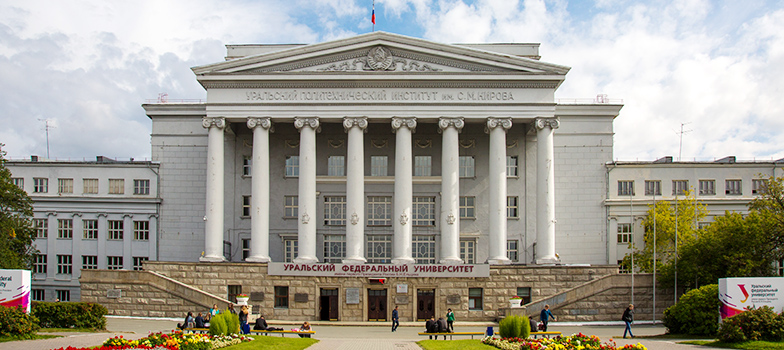Ural Fedeal University’s Scientists Figured Out How Noise Affects Neural Networks
The project “Mathematical modeling and analysis of noise-induced phenomena in biological systems” led by Lev Ryashko was supported by the Russian Science Foundation. Photo: Ilya Safarov.
Physicists of the Ural Federal University studied the effect of noise inside the human body, which interferes with the free transfer of information, on the operation of neural networks. They showed that such an impact can change the state of the system, but it is not always possible to predict exactly what this will lead to. The research results will help not only to improve the work of artificial neural networks, but also to understand various pathological conditions of the brain. Scientists spoke about the work done in the pages of the journal Communications in Nonlinear Science and Numerical Simulation. The study was supported by a grant from the Russian Science Foundation (No. 16-11-10098, Mathematical modeling and analysis of noise-induced phenomena in biological systems).
Systems of interconnected elements are found in almost all areas and are of particular interest as objects of mathematical modeling. They are also neural networks that perform a variety of tasks; their natural prototype is responsible for all our thought processes. The most common are oscillatory neural networks (in the same brain), consisting of oscillating (oscillating) elements. Processes inside such systems can be predictable or random – then the network is called stochastic.
However, there is no guarantee that the system will always work smoothly: it can be affected by external noise. This is the name for oscillations of various natures that can change the dynamics of the neural network. For example, in the brain, the functions of system elements are determined by the activity of ion channels that open and close in response to certain signals. Accordingly, they allow or block the flow of ions. But there is always a possibility that the channel may not work “in time” or noise will interfere with the interaction of ions. Depending on the sensitivity, the system can continue in its usual mode, get lost or alter its dynamics altogether.
In this work, scientists analyzed the sensitivity of systems to random influences. Physicists have studied three main options for neural communication and the effect of noise on them: equilibrium subsystems, periodic oscillators, and chaotic oscillators. In the first situation, with an increase in the forces of interconnection, the neural system passes from an equilibrium mode to an oscillatory mode with antiphase dynamics. Random noise that the system “hears” can destroy the synchronization in it. For the second variant, it was proved that even under the influence of noise, the system retains antiphase and in-phase dynamics, while the antiphase regime can become chaotic. The third case is interesting because, with the strengthening of the coupling, chaotic oscillations can transform into regular periodic ones.
Scientists have studied synchronization based only on stochastic systems, and in general, there are about 40 types of neural synchronization. In-phase and anti-phase synchronization plays a major role in how our brains function. Due to the fact that the processes in such interaction can be random, the dynamics of oscillations in such systems is very complex. The synchronization process can also be affected by serious diseases and brain disorders, for example, Parkinson’s disease, Alzheimer’s disease, epilepsy, tremors.
“Our model investigated additive noise and its effect on neural systems. This noise travels through channels in neural networks. But there is also multiplicative noise, we cannot assert exactly what effect it will have on neural connections, and what dynamics it will lead to in a situation where the external noise will be mixed with the internal one. It would be very interesting to make this topic the subject of future work, ”says Lev Ryashko, professor of the Department of Theoretical and Mathematical Physics of the Ural Federal University.

